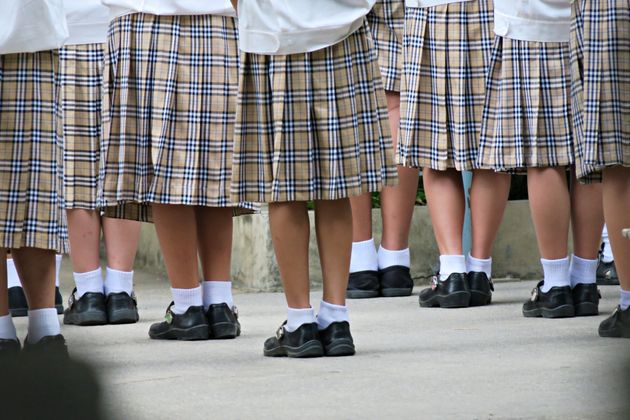
Pupils protesting against a new “gender neutral” uniform have been barred from entering their school and sent home on the first day of term.
Dozens of pupils and parents gathered outside Priory School in Lewes, East Sussex, to demonstrate against the rules, which include a ban on girls wearing skirts. The school said the policy is designed to promote equality among its students.
Cressida Murray, who helped organise the protest alongside her daughter Libby, said the school’s reaction was “outrageous”.
“They just weren’t prepared and they haven’t let anyone in,” she said. “I was hoping there was so many people that they would see sense and let them in.”
Murray said many families cannot afford to buy the uniform – some of whom will need it for less than a year.
Protesting pupils held signs saying: “A new uniform for nine months is not sustainable” and “Fast fashion is the second biggest contributor to climate change”.
A spokesman for Priory School said: “Priory School uniform is designed to be a practical uniform which encourages students to be ready to focus on their school work and activities.
“Our uniform also helps us to dilute the status placed on expensive clothes or labels and challenge the belief that we are defined by what we wear. Instead, we encourage individual beliefs, ideas, passions and wellbeing and an ethos of camaraderie that is reflected in this shared experience.
“We believe that a uniform worn without modification is the best way to ensure equality. We do not want children feeling vulnerable and stressed by the pressure they feel to wear or own the latest trend or status symbol.
Priory School is not unusual in having trousers as its main uniform for pupils, it said – at least 40 other schools have a similar uniform requirement. Many parents of pupils who attended the demonstration have since received texts from the school asking them to explain their child’s “unauthorised absence”.
“Our core purpose remains the quality of teaching and learning and we aim to achieve this by maximising the time spent on planning, delivering and evaluating the quality of provision,” the spokesman said.


